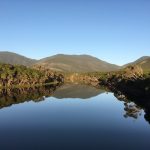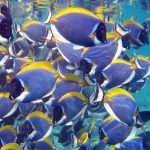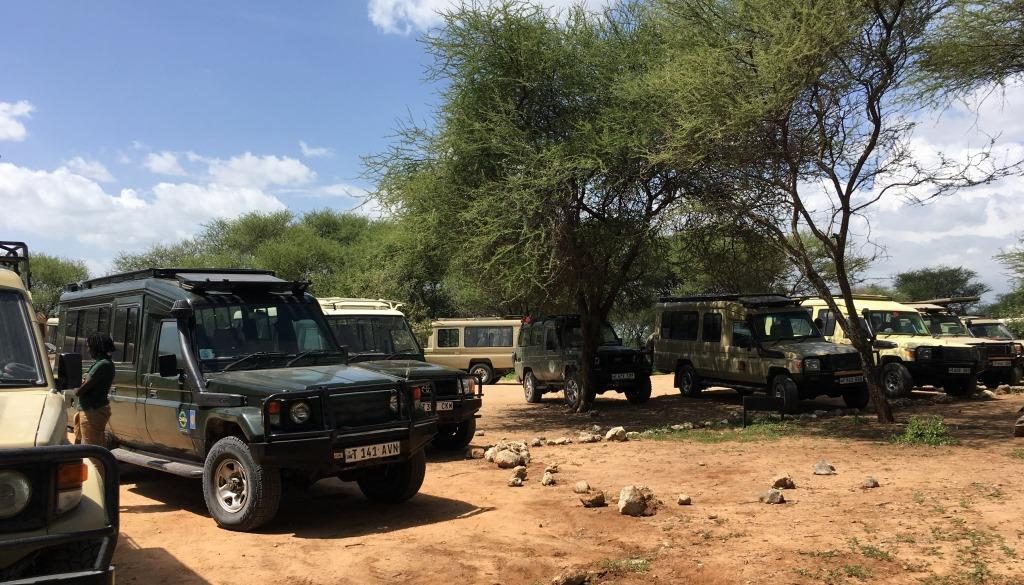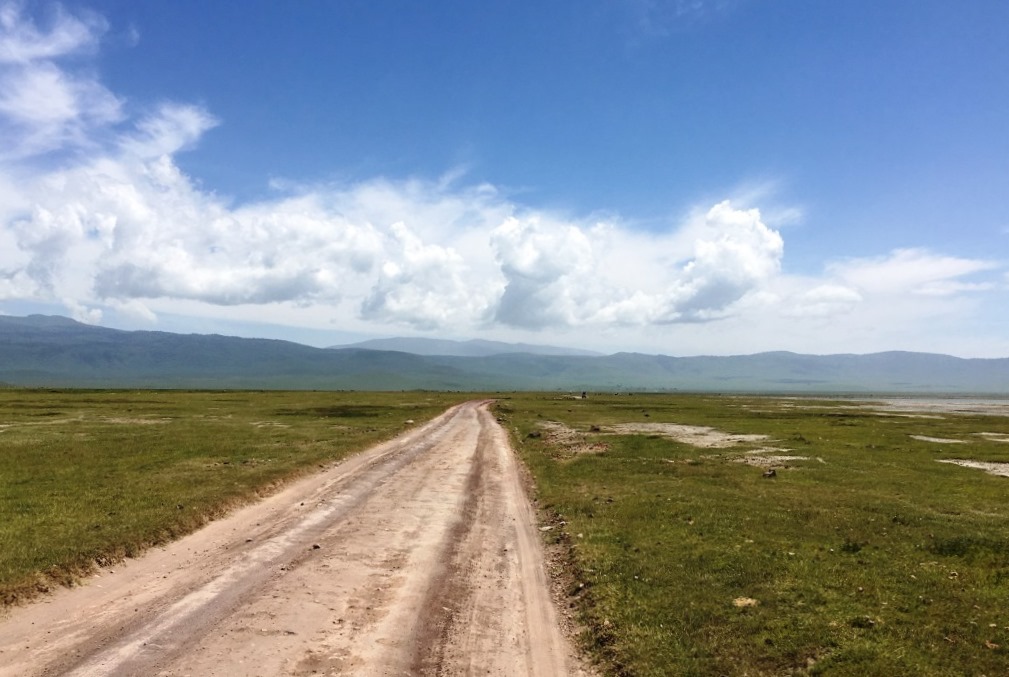
Tanzania safari and beach – things to consider when organizing a trip: Traveling to Tanzania is still a little bit more adventurous than going to the Canary Islands. It is a tropical country, located in East Africa, and demanding in terms of health, finances, equipment etc.
Anzeige*
Based on our experiences after a “classic Tanzania trip”, i.e. safari combined with a beach vacation on Zanzibar, here are some things you might want to consider when planning yourself, like
- Tour organizers
- Where, when and how long to go
- Where to stay
- Costs for accommodation, food, drinks
- Tips
- Shopping
- Mosquitos
- Clothing and shoes
- Beach vacation on Zanzibar
1. Safari Tour Organizers:
Usually we prefer to organize everything ourselves: flights, accommodations, rental cars. However, for the “classical” safari tour it is advisable to take advantage of an established safari travel agency. It saves a LOT of organization and nerves. And – due to their “good connections” – you cannot beat their prices.
Self-Drives
There are some “self driving” offers around – you can pick up a four wheel drive at the airport and just go. However, there are lots of police controls, and I’m not sure how they treat foreigners. Then there are huge National Park entrance fees for private cars to consider – we got reports about 400 US $ and more for getting into the Ngorongoro crater with an own car. So, self-drives might get really expensive.
You may try to organize transport between different lodges yourself. However, the distances e.g. between Arusha NP and Ngorongoro are large (3.5 hours drive one way, minimum). So, the transfers offered by lodges are accordingly expensive.
Safari Travel Agency
In the end, an organized tour, including a guide/driver, is probably the most efficient (and cost-efficient) solution. Thus, I would definitely recommend going with an established safari travel agency, providing a driver / tour guide. Then you can concentrate on tracking animals and taking pictures.
We chose “Chamaeleon Reisen” (https://www.chamaeleon-reisen.de/Afrika/Tansania/Reisebausteine), a German travel agency that offers many different safari trips. We went with the “basic version”: 5 days – 4 nights, the major highlights of northern Tanzania (Arusha National Park, Tarangire, Ngorongoro and Lake Manyara). And we were absolutely happy with our choice. Perfect organization, very nice tour guide, good choice of hotels. We met several other people on our way who had booked via Chamaeleon, and all of them were absolutely content. So, we definitely recommend Chamaeleon! And thanks again to Anne Moeller from Chamaeleon for the support and the perfectly arranged travel documents!
2. Where, when and how long to go
Where and how long
Considering the length of a Safari trip, we preferred to start out with five days, which is basically the shortest version you can book with Chamaeleon. And, after five days on bumpy roads, it was really nice to “change gear” and have some rather relaxing days and walking tours. Downside: within 5 days, it is almost impossible to get to Serengeti. Tours including the Serengeti will probably take around 8-10 days. However, five days do provide a good impression of what safari in Tanzania is like. And what you personally like and prefer. For us, Serengeti is definitely still on our “bucket list”, as well as the lesser populated National Parks in the West and South (like Selous and Ruaha). Ngorongoro and Tarangire were absolutely highlights on our tour, due to the huge number of animals. But driving almost constantly in a convoy of jeeps does not really support the idea of “being alone with nature and animals”. Arusha was great for the walking safaris; Lake Manyara is probably the one we would not visit a second time. Crowded and less animals than elsewhere.
In general, the most famous National Parks will also be the most frequented ones. Everybody goes to Ngorongoro and Serengeti. The number of roads is limited and the likelihood of constantly meeting other vehicles is very high. So, for the “solitude experience” these touristic hotspots are not the best choice. On the other hand: there are good reasons for visiting these parks, like an extremely high density of animals. So it’s up to you: lots of animals and tourists, or (probably) less of both.
Being “on the road” constantly for 10 days or more might be quite challenging. Roads are dusty and bumpy, and at a certain time point you might get a bit tired of driving around entire days.
So, if you’re planning for a longer safari like more than 6-7 days, there should be some relaxing days in between. Preferably at a nice lodge (like the Hatari Lodge), where you can just relax on a nice terrace and watch the animals pass by.
When
Best travel times for Safaris are – of course – the lesser rainy months. You can easily look up the climate of e.g. Arusha. January and February are dry, as well as the longer dry stretch from July to September/October. The rainiest months should be avoided, as many roads might not be accessible.
3. Where to stay
Here’s the list of hotels/lodges where we stayed. Overall, we can recommend them all, but certainly the Shu’Mata Camp and Hatari Lodge stand out – regarding the costs, but definitely also regarding the great experience.
| Lake Duluti Lodge (near Arusha, https://www.lakedulutilodge.com/): excellent restaurant! |  |
| Highview Hotel (Karatu, http://www.highviewhotel.com/): OK, but not great… |  |
| Meru View Lodge (close to southern Arusha Nat. Park Gate, http://www.meru-view-lodge.com/meru/en/): nice and more in the “medium price range” | |
| Shu’Mata Camp (2 hours north of Moshi/Asursha, http://www.shumatacamp.de/index.php): the perfect “solitude getaway” – a very special experience! |  |
| Hatari Lodge (close to nothern Arusha Nat. Park Gate, http://www.hatarilodge.de/en/contact.php): great atmosphere, great location, great food! |  |
| Le Parlour Apartments (Boma La Ngombe, close to JRO airport, no own website): basic, but OK for a short night | |
| Melia Zanzibar Hotel (Kiwengwa, Zanzibar, https://www.melia.com/en/hotels/tanzania/zanzibar/melia-zanzibar/index.html): nice in every aspect, but a bit secluded – great, if you just need sunshine, beach and good food |  |
| Dhow Palace Hotel (Stone Town, Zanzibar, http://www.dhowpalace-hotel.com/): very central location, nice traditional place |  |
4. Costs for accommodation, food, beverages
Accomodation Costs
Tanzania is an expensive country for safari tourists – accommodation costs add up pretty fast to a thousand US dollars per room per night, if you book the “all inclusive package” with game drives/walks etc. – in places like the Shu’Mata Camp or Hatari Lodge it’s well justified. Still…
Even accommodation only will cost between 150 and 350 US dollars, if you stay in a 3-4 star lodge. Meals and beverages come extra. So, travelling with a family of four and requiring two rooms per night can get a bit costly. A chance to save some money: whenever there is a kind of “transition night” (meaning: you end up somewhere late in the day and are scheduled to continue to some other place early the next morning), you may look for a lesser priced accommodation alternative. Like we did for our last night on the mainland Tanzania. We booked the “Le Parlour” Lodge, which consists of 4 small houses, 2 bedrooms each, for less than 100 $ per night, and only a 10 minute drive to the Kilimanjaro Airport.
Beverages
Beverages / drinks: no matter if booked individually or in the frame of an organized trip – additional costs occur for drinks in the evening. However, even in the “high end” lodges the prices for beverages are OK for European “standards”. Like 3-5 US $ for a beer (we liked Safari and Kilimanjaro better than Serengeti, but all of them are good, if cooled down). Or 15-20 US dollars for a bottle of very decent wine (either local – we recommend wines from Dodoma or South Africa). They are usually available everywhere. Bottled water is an essential – not only for drinking during the day, but also for tooth brushing. Large water bottles are available at lodges (there around 4 US $ each) and at local shops (only 1 US $). So, you might want to ask your driver/guide to stop at a local shop.
 |
 |
 |
5. Tips:
Tanzania is a poor country and many of the people you meet during your vacation (like tour guides, room maids, waiters etc.) are depending on decent tips. Chamaeleon travel provided suggestions with respect to “how much” – like 5-7 US dollars per day and person for a tour guide. In doubt, just give a bit more. This money ends up directly where it is needed. Most lodges collect tips at the reception – whatever you give will be divided for all employees. Tips should be given in a closed envelope. We forgot to bring them and were forced to make them DIY style from white paper sheets. Next time, we will be better prepared…
6. Shopping:
There are not too many opportunities to spend money during a safari. However, you might come across some (more or less) local shops. Then keep in mind that prices have to be negotiated. One of the “classic” Tanzania souvenirs are Tanzanite stones. Tanzanite is a precious stone that comes in lighter violet to deep blue colors. The deeper the blue, the higher the price. It is expected that the final Tanzanite sources will dry out within the next 10-20 years. So, good quality Tanzanite stones might be a valuable souvenir. However, there are lots of fakes out there. So, for buying Tanzanite you should go to one of the well-known shops. There you can buy raw or cut stones in almost every size and price range, and you will get a certificate. You can negotiate the price – and if you end up at 50% reduction from the original price, you might still leave a bit uneasy whether this was a decent deal…
7. Mosquitos and medication/prophylaxis:
Yes, the classic Tanzania safaris take place in Malaria regions. Speaking to a doctor beforehand and taking Malaria prophylaxis is mandatory. In addition, we used an insect repellant (in our case: “Autan tropical”) quite successfully, getting almost no bites. Mosquito nets are common, but are usually not “mosquito-tight”. I was surprised that most of them could be sealed well in the front, but left gaps in the back of the beds or to the floor. And bedposts make it difficult to stuff the silky fabric under the mattress.
8. Clothing and shoes:
Clothing
Temperatures in Tanzania are high throughout the year, being pretty close to the equator. During the night the air cools down a little. So, for the early morning drives some warm clothes are advisable (long trousers and e.g. some fleece jacket). During the day, shorts and T-Shirts are fine. Some areas (e.g. Tarangire and Lake Manyara) are “Tsetse fly country” – here you might prefer to go with long sleeves and trousers, to be on the save side. The danger of mosquito bites is highest from early evening till early morning. To avoid bites, you should definitely wear appropriate clothes (long sleeves and trousers) during these times of the day. Many lodges do have swimming pools, and after a day “on the road” under a burning sun it is really nice to jump into (slightly) cool water. So, don’t forget to bring swim gear.
Shoes
Shoes: if you don’t want to end up with a 20 kg suitcase, you will be restricted regarding the variety of shoes, trousers, shirts etc. We discussed forth and back about taking the hiking boots or just normal sports shoes. And decided finally for the lighter sports shoes, ending up very content with this decision. During a classical game drive safari you will definitely not walk a lot, and just for sitting in a jeep, sports shoes are completely OK. During our walking safaris at the Hatari Lodge we did some walking, of course, but nothing that couldn’t be handled with sports shoes. Hiking boots are heavy and warm – and only required if you intend to do serious hiking, like climbing the Kilimanjaro or the Mount Meru. During the day drives you might even be fine with sandals. However, due to high risk of mosquito bites in the morning and evening hours, you should wear closed shoes during these hours.
9. Beach vacation on Zanzibar:
Zanzibar is the “classical” add-on after a Tanzania safari. For good reasons: it is just a stone’s throw from Kilimanjaro to the tropical island. And after days on dusty roads the warm waters of the Indian Ocean are the perfect extension. Best travel times are the same as for the mainland (see above).
Accommodation prices on Zanzibar are a bit lower than on the mainland. Nevertheless, for a luxury resort you will also spend 200 Euros and more per night and room. These luxury resorts are usually secluded and guarded. If you prefer the “local spirit”, you will have to look for an accommodation in the center of a village.
The tidal situation is the same for all: The Zanzibar coast is prone to a large tidal range, low and high tide changing every 6-7 hours. If you’re lucky, you start out with high tide around noon and will be able to swim from morning to afternoon. If you don’t check in advance, you might end up in the not-so-lucky group (as we did): starting out with the low tide at noon and NOT being able to swim in the ocean from morning till late afternoon. To avoid this, you might want to delay or advance your trip by two weeks.
 |
 |
| high tide | low tide |
Or just take it as it is…walking in ankle-deep water, watching sea stars, can be quite nice as well!
10. Further Reading: Lonely Planet Tanzania Travel Guide
Greetings from Zanzibar!
See more of our Tanzania Safari and Zanzibar Beach Trip here:
*According to a German Court decision, all texts containing links to commercial pages (e.g. links to Tripadvisor, Airline, hotel or restaurant websites) have to be identified as “commercial” (in German “Anzeige”). As my texts do contain links like that, I therefore identify each post and page containing a link as “Anzeige”. However (and referring to the “About Me” page) I would like to point out that I do NOT post any sponsored content in my texts; I pay for all my trips myself.






























